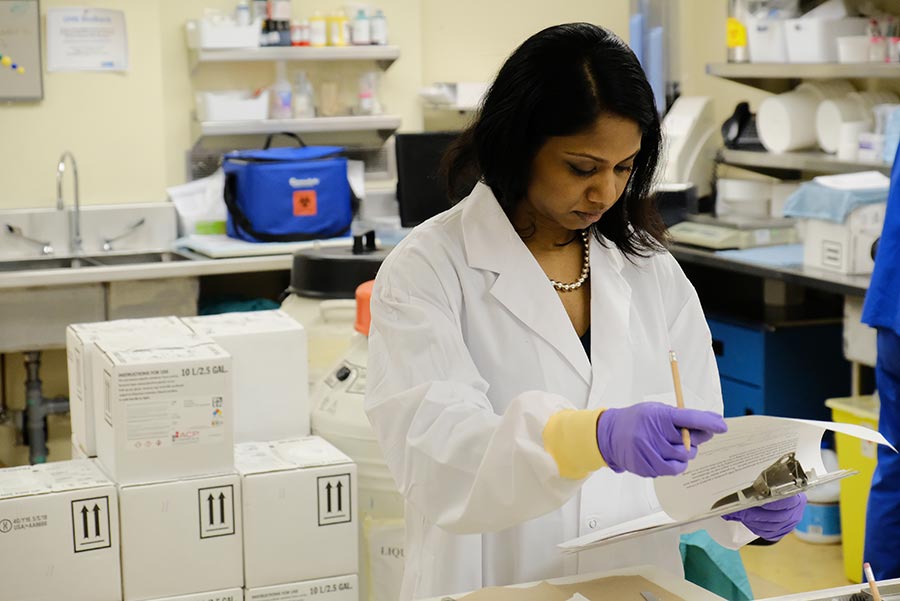 Matching tumour tissue patterns to their molecular make-up has yielded a new way to group pancreatic tumours, which will help clinicians better tailor treatments to patients, with the aim of improving survival.
Matching tumour tissue patterns to their molecular make-up has yielded a new way to group pancreatic tumours, which will help clinicians better tailor treatments to patients, with the aim of improving survival.
In a study of 86 patients with pancreatic ductal adenocarcinoma (PDAC), UHN pathologists assessed more than 800 tumour tissue slides to improve on the current three-tiered staging system ranging from well, moderate to poor. However, the vast majority of tumours are classified as moderate, which gives little clinical information to physicians about how best to treat these patients.
The pathologists were able to stratify tumours into two groups based on the evaluation of the slides. Tumours that showed 40 per cent or more aberrant, destructive patterns – such as cells with punched out spaces resembling Swiss cheese – matched the molecular profiles of tumours with poorer survival for patients.
“Although we have been aware of these patterns, putting them together with an established threshold indicating levels of aggressive tumour patterns is new and helpful for our clinicians,” says Dr. Sangeetha N Kalimuthu, a UHN gastrointestinal pathologist.
The study, by first author Dr. N Kalimuthu and senior author Dr. Runjan Chetty in Laboratory Medicine, UHN, and Laboratory Medicine and Pathobiology, University of Toronto, was published online in Gut BMJ on June 14.
PDAC is one of the most lethal cancers, with a five-year survival rate of less than 10 per cent. Each year, more than 350,000 people worldwide are diagnosed and more than 340,000 die of the disease.
Some reports project a twofold increase in the number of new PDAC cases and deaths by 2030.
According to Dr. N Kalimuthu, and a cross-disciplinary team of physicians and scientists, improved classification may lend itself to better treatment strategies and the development of deep learning models.
For a long time, the gold standard for diagnosing pancreatic cancer has been histological evaluation – looking at tissue under the microscope and classifying its grade.
But over the last few years, several large-scale studies have discovered molecular subtypes of pancreatic cancer, which are associated with prognosis.
“Our aim was to revise and reappraise the current grading system to find features that correlated with these molecular subtypes.” says Dr. N Kalimuthu.
She adds that molecular profiling, while making significant advancements to cancer therapy, is both expensive and requires specialized equipment. Now, with this new, easily applicable pathology classification, the authors are able to provide similar information using standard pathology stains with a rapid turnaround time.
“Any pathologist in any part of the world can do this,” says Dr. N Kalimuthu.
“It’s the bread and butter of what pathologists do. It’s fast, cheap and accessible.”
Dr. Steve Gallinger from UHN’s Hepatobiliary/pancreatic Surgical Oncology Program, is co-author in the research.
“Pathologists have had a long, rich history in their vital roles to diagnose and stage pancreas cancer,” Dr. Gallinger says. “This study is an elegant demonstration of the potential of personalized medicine, with the promise of improved outcomes for our patients.”
The next step in their research is to carry out a multi-institutional validation study and develop artificial intelligence deep learning algorithms to further reduce turnaround times and increase accuracy from the identified patterns to help pathologists accurately quantify large amounts of data and stratify patients so they can benefit from different therapies.
This article was originally published on June 20, 2019 by the University Health Network.
